


 |
 |
 |
The name Titanic was derived from Greek mythology and meant gigantic. Built in Belfast, Ireland,
in the United Kingdom of Great Britain and Ireland (as it was then known), the RMS Titanic was the second of the three Olympic-class ocean liners.
The first was the RMS Olympic and the third was the HMHS Britannic. They were by far the largest vessels of the British shipping company
White Star Line's fleet, which comprised 29 steamers and tenders in 1912. The three ships had their genesis in a discussion in mid-1907
between the White Star Line's chairman, J. Bruce Ismay, and the American financier J. P. Morgan, who controlled the White Star Line's parent corporation,
the International Mercantile Marine Co. (IMM). The White Star Line faced an increasing challenge from its main rivals Cunard, which had recently launched the Lusitania
and the Mauretania ( the fastest passenger ships then in service ) and the German lines Hamburg America and Norddeutscher Lloyd.
Ismay preferred to compete on size rather than speed and proposed to commission a new class of liners that would be larger than anything that had
gone before as well as being the last word in comfort and luxury. The company sought an upgrade in their fleet primarily in response to the
Cunard giants but also to replace their oldest pair of passenger ships still in service, being the SS Teutonic of 1889 and SS Majestic of 1890.
Teutonic was replaced by Olympic while Majestic was replaced by Titanic. Majestic would be brought back into her old spot on White Star's New York
service after Titanic's loss. Le RMS Titanic est un paquebot transatlantique britannique de la White Star Line construit à l'initiative de Joseph Bruce Ismay en 1907.
Il a été conçu par les architectes Alexander Montgomery Carlisle et Thomas Andrews des chantiers navals Harland & Wolff. Sa construction débute en 1909
à Belfast et se termine en 1912. C'est à l'époque le plus luxueux et le plus grand paquebot jamais construit. Il appartient à la classe Olympic avec
ses deux sister-ships, l'Olympic et le Britannic. La coque du Titanic est pourvue de seize compartiments étanches servant à protéger le navire en cas
de voies d'eau ou d'avaries importantes, ce qui lui donna la réputation de paquebot « insubmersible » et conduit, encore aujourd'hui, les médias
contemporains à le présenter comme un navire des plus sûrs. Le 10 avril 1912, à 12 h 15, le Titanic appareille de Southampton en Angleterre avec à son bord 953 passagers dont 31 trans-Manche
et 889 membres d'équipage. On ne compte pas moins de quarante nationalités présentes à bord du navire. Lors de son départ, il manque de peu de heurter
le paquebot City of New York amarré au quai 38. Les remous causés par les hélices du Titanic font rompre les amarres du City of New York, et ce
dernier se rapproche rapidement du Titanic jusqu'à ce qu'il n'y ait plus que 2 mètres qui les séparent. Le commandant Edward Smith donne alors l'ordre
de mettre les machines en arrière toute, ce qui a pour effet de repousser le City of New York. Le Titanic quitte enfin Southampton avec une heure de
retard. À 18 h 35, le Titanic étant arrivé à Cherbourg en Normandie, 24 passagers trans-Manche débarquent et 274 embarquent, principalement des 1re classes.
Cependant le Titanic reste en rade car il ne peut pas atteindre le quai, le fond n'y étant pas assez profond pour la taille du paquebot. Ce sont donc,
comme pour les autres paquebots, deux transbordeurs de la White Star Line, le Nomadic et le Traffic, qui se chargent de transborder les 274 passagers
qui embarquent sur le Titanic. À 20 h 10, le paquebot appareille de Cherbourg pour Queenstown (aujourd'hui Cobh) en Irlande. |

History is made Name: RMS Titanic Owner: White Star Line Port of registry: United Kingdom of Great Britain and Ireland Liverpool Route: Southampton to New York City Ordered: 17 September 1908 Builder: Harland and Wolff, Belfast Cost: 7.5 million (US dollars) Yard number: 401 Laid down: 31 March 1909 Launched: 31 May 1911 Completed: 2 April 1912 Maiden voyage: 10 April 1912 In service: 10–15 April 1912 Identification: Radio call sign "MGY" Fate: Hit an iceberg 11:40 p.m. (ship's time) 14 April 1912 on her maiden voyage and sank 2 h 40 min later Status: Wreck |
General characteristics Class and type: Olympic-class ocean liner Tonnage: 46,328 GRT Displacement: 52,310 tons Length: 882 ft 9 in (269.1 m) Beam: 92 ft 0 in (28.0 m) Height: 175 ft (53.3 m) (keel to top of funnels) Draught: 34 ft 7 in (10.5 m) Depth: 64 ft 6 in (19.7 m) Decks: 9 (A–G) Installed power: 24 double-ended and 5 single-ended boilers feeding two reciprocating steam engines for the wing propellers, and a low-pressure turbine for the centre propeller output: 46,000 HP Propulsion: Two three-blade wing propellers and one four-blade centre propeller Speed: Cruising: 21 kn (39 km/h; 24 mph). Max: 24 kn (44 km/h; 28 mph) Capacity: Passengers: 2,435, crew: 892. Total: 3,327 (or 3,547 according to other sources) Notes: Lifeboats: 20 (sufficient for 1,178 people) |

  |

 |
 |
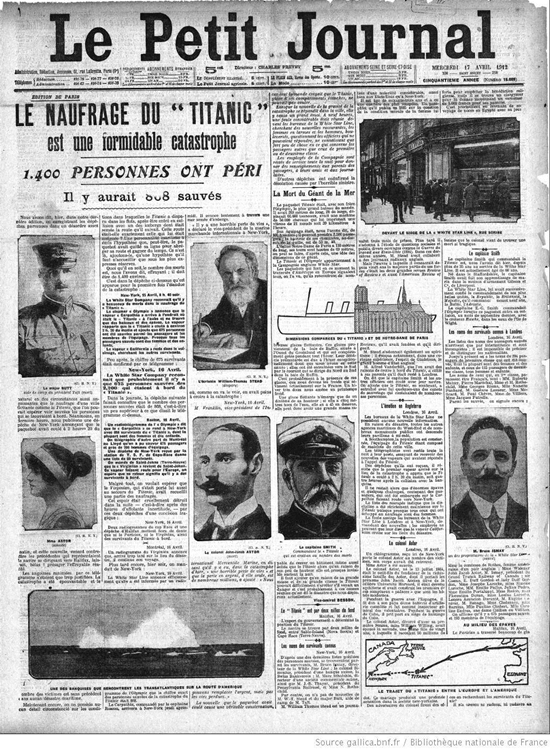 |
 |
 |
 |
 |
 |
 |

 |
 |

 |

 |
 |
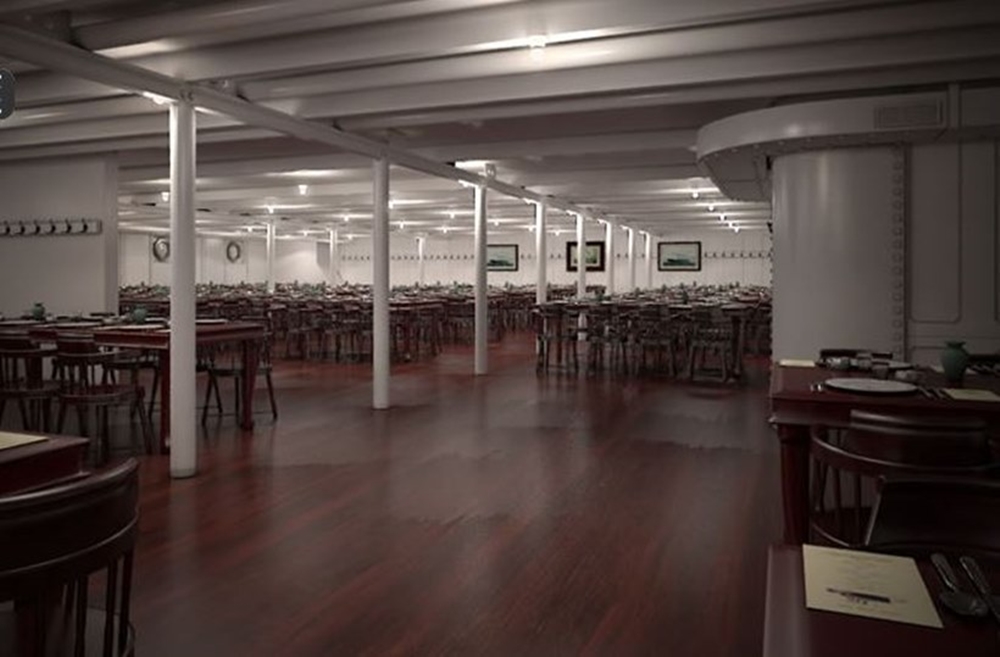 |
 |
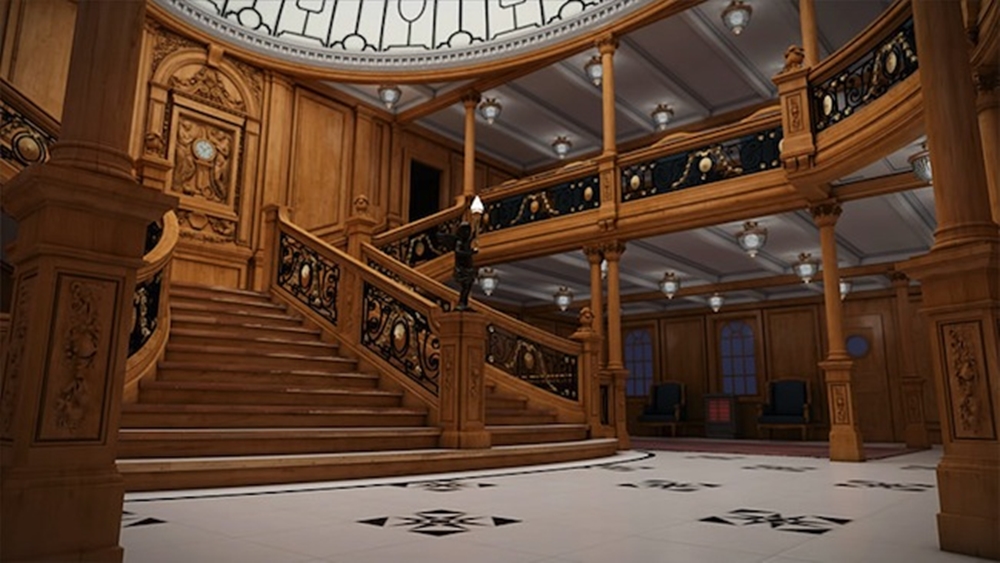 |
 |
 |
 |
 |
 |
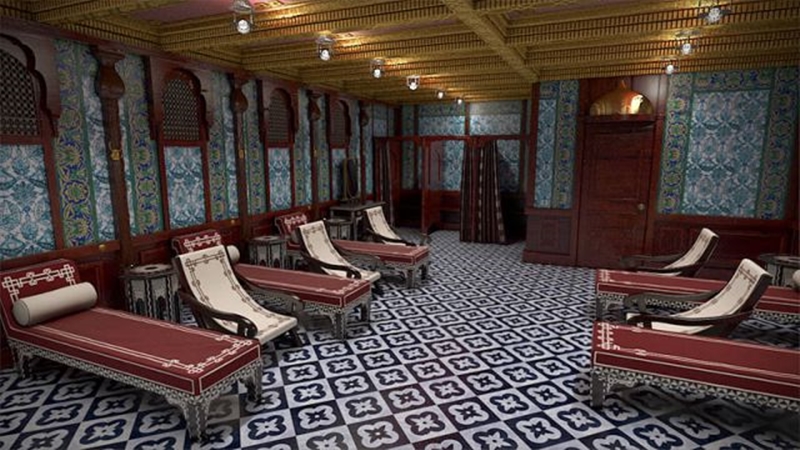 |
 |
 |
 |
 |
 |
 |
 |
 |
 |
 |

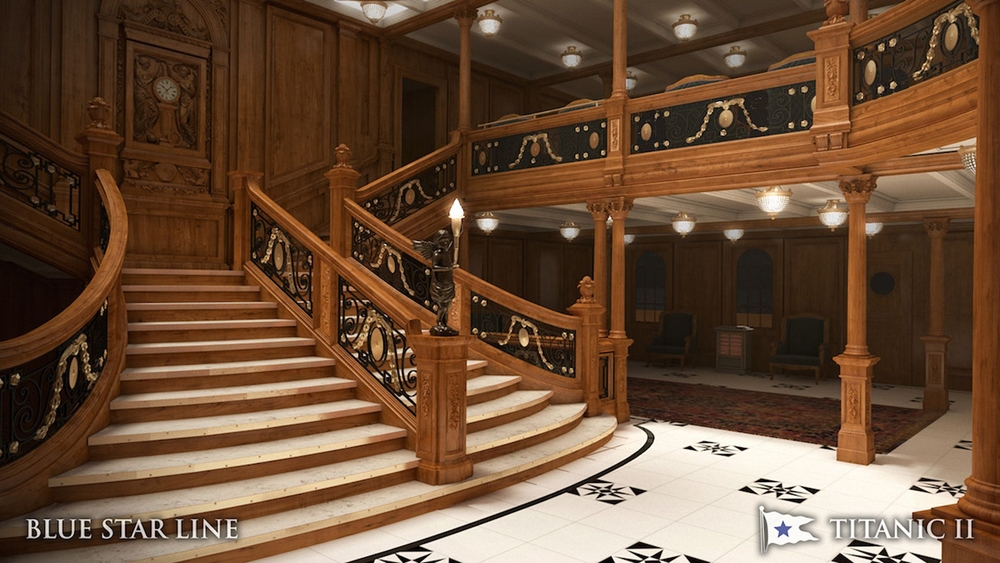 |
 |